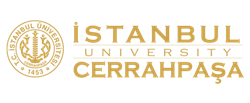AIM: The aim of this study was to evaluate family health workers’ exposure to injuries with needlestick and sharp instruments and its related factors.
METHOD: The universe of the relational descriptive study consisted of 150 family health workers working in 26 family health centers in the Bornova district, and the study was completed with 115 family health workers who voluntarily accepted to participate in the research. The data consisted of 4 sections and 26 questions in total: the questionnaire form created by the researchers in line with the literature, the sociodemographic information form, the questions regarding the needlestick and sharp injuries. In the evaluation of the data, using SPSS 20.0 package program, number, percentage distributions, mean and standard deviation were calculated, and Kruskal–Wallis analysis and logistic regression analysis were performed.
RESULTS: All of the family health workers included in the research were women and the average age was 38.6 ± 6.38. It was determined that 81.7% of family health workers received occupational health and safety training, and the average score they gave to the level of knowledge about what to do in case of a cutting-edge injury was 7.62 ± .96. In the study group, the ratio of history of needlestick and sharp instrument injury was 79.1%, and the average number of injuries was 6.72 ± 4.01.
CONCLUSION: As a result of the research, it has been determined that family health workers’ occupational health and safety training increases the use of protective equipment, where the rate of injuries is high and the rate of reporting in case of injury is very low.
Cite this article as: Uysal Toraman, A., Dağhan, S., Konal Korkmaz, E., Ateş, E., & Cobadak Calt, A. (2021). Sharp object injurıes of family health workers working in primary health care services and related factors. Florence Nightingale Journal of Nursing, 29(3), 324–333.




.png)
.png)